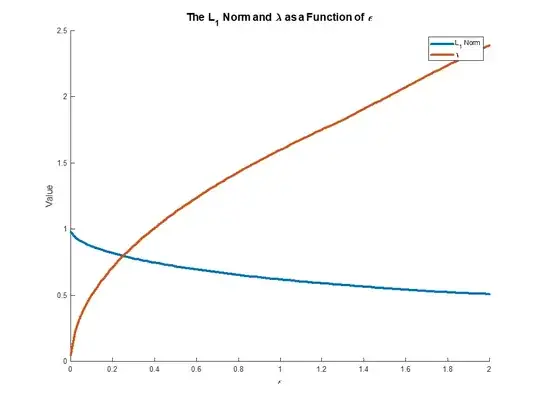I am having some difficulties to understand the difference between:
- Basis Pursuit DeNoising (BPDN) which is often stated as:
$min \left \| x \right \|_1 s.t \left \|Ax-b \right \|_2 \leq \varepsilon$ (1)
but solutions are generally found by solving:
$min \left \| Ax-b \right \|_{2}^{2}+\lambda \left \| x \right \|_1$ (2)
- And LASSO, which is often stated as:
$min \left \| Ax-b \right \|_2 s.t \left \|x \right \|_1 \leq \varepsilon$ (3)
for which in Lagrangian form is also (2)
It seems to me that the natural langrangian form for BPDN would be: $min \left \| x \right \|_1 +\lambda\left \| Ax-b \right \|_{2}^{2}$ But i never saw this in any literature. Can i conclude from this that (2) for small $\lambda$ is BPDN, and for large $\lambda$ its LASSO? or where is the difference between the two?
The main point which i do not understand about finding a BPDN solution is how to use an estimate for the measurement error or noise if this is available?
If one knows for example that the noise in measurements b is for example 10%, how can i use this information about in the solution procedure?
Expression 1 would allow me include this error estimate by means of epsilon.
The naive approach of putting expression 1 in a general purpose non-linear optimiser with inequality constraints and some fixed value for epsilon works however very poorly. I understand that with the value of lambda i can control the sparsity, but how can i set epsilon in the standard solution procedures, which all seem to be using the Lagrangian form (2), where the noise threshold epsilon seems absent?
Any helpful insights are really appreciated.
